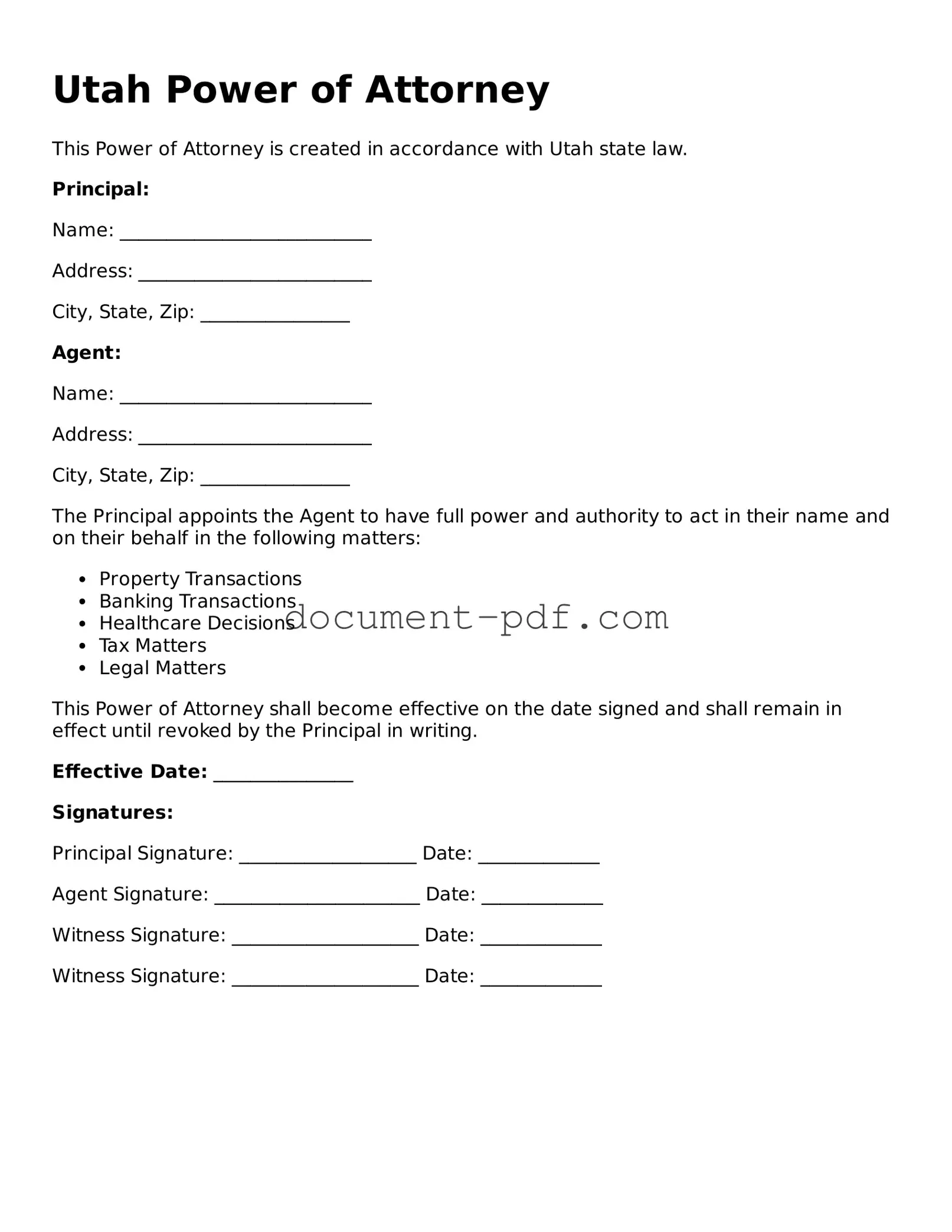Attorney-Verified Utah Power of Attorney Template
A Power of Attorney form in Utah allows an individual to designate another person to make decisions on their behalf, especially in financial or medical matters. This legal document can be crucial in ensuring that your preferences are honored when you are unable to act for yourself. To get started on filling out the Utah Power of Attorney form, click the button below.
Access Power of Attorney Editor Here
